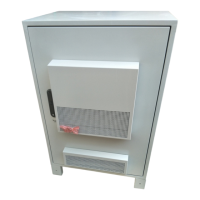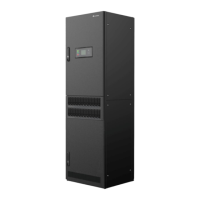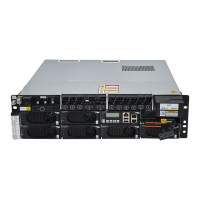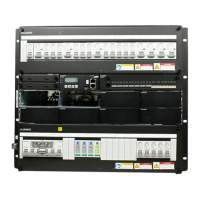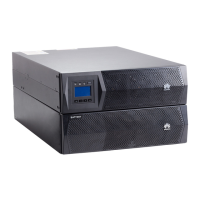What to do if the cabinet surface of my Huawei Power Supply is damaged?
- JJody GonzalezAug 1, 2025
If the cabinet surface is damaged or distorted, repaint and repair the cabinet.
What to do if the cabinet surface of my Huawei Power Supply is damaged?
If the cabinet surface is damaged or distorted, repaint and repair the cabinet.
Describes the TP48200A-D14A1 in terms of overview, component description, safety precautions, and system maintenance.
Lists the target audience for this document: technical, maintenance, and system engineers.
Details the revisions and updates made to the document across different issues.
Provides general safety instructions and guidelines for operating and maintaining equipment.
Focuses on personal well-being and avoiding injury during equipment operations.
Outlines the necessary qualifications and training for personnel involved in equipment installation and maintenance.
Details crucial safety measures related to grounding, AC, and DC power connections.
Specifies conditions for safe equipment installation, including temperature, humidity, and location.
Covers safety procedures for mechanical operations like hoisting and using ladders.
Encompasses critical safety precautions for handling, installing, and maintaining batteries.
Explains the meaning of the model name TP48200A-D14A1 and its components.
Illustrates a typical site power solution incorporating the TP48200A-D14A1 system.
Highlights key characteristics such as hot-swappable modules, intelligent sleep, and safety design.
Details the main components of the TP48200A-D14A1 system and their configuration.
Describes how the power system converts AC to DC and distributes power.
Describes the physical enclosure of the power system and its specifications.
Explains how the system manages internal temperature using ventilation and fans.
Details the appearance, panel, and indicator descriptions of the rectifier module.
Describes the unit responsible for distributing AC and DC power.
Covers the appearance and functions of the monitoring unit and its components (PMU, UIM).
Explains the role and support for storage batteries in the system.
Outlines the schedule and procedures for regular system checks and upkeep.
Provides methods for diagnosing and resolving common system faults and issues.
Guides users on how to replace key components like rectifiers, PMUs, and circuit breakers.
Describes the front panel of the power monitor unit (PMU) and its components (LEDs, LCD, buttons).
Explains how to navigate and operate the system using the LCD interface, including querying alarms and setting parameters.
Details how to access and use the web-based user interface for system management, status monitoring, and configuration.
Describes the TP48200A-D14A1 in terms of overview, component description, safety precautions, and system maintenance.
Lists the target audience for this document: technical, maintenance, and system engineers.
Details the revisions and updates made to the document across different issues.
Provides general safety instructions and guidelines for operating and maintaining equipment.
Focuses on personal well-being and avoiding injury during equipment operations.
Outlines the necessary qualifications and training for personnel involved in equipment installation and maintenance.
Details crucial safety measures related to grounding, AC, and DC power connections.
Specifies conditions for safe equipment installation, including temperature, humidity, and location.
Covers safety procedures for mechanical operations like hoisting and using ladders.
Encompasses critical safety precautions for handling, installing, and maintaining batteries.
Explains the meaning of the model name TP48200A-D14A1 and its components.
Illustrates a typical site power solution incorporating the TP48200A-D14A1 system.
Highlights key characteristics such as hot-swappable modules, intelligent sleep, and safety design.
Details the main components of the TP48200A-D14A1 system and their configuration.
Describes how the power system converts AC to DC and distributes power.
Describes the physical enclosure of the power system and its specifications.
Explains how the system manages internal temperature using ventilation and fans.
Details the appearance, panel, and indicator descriptions of the rectifier module.
Describes the unit responsible for distributing AC and DC power.
Covers the appearance and functions of the monitoring unit and its components (PMU, UIM).
Explains the role and support for storage batteries in the system.
Outlines the schedule and procedures for regular system checks and upkeep.
Provides methods for diagnosing and resolving common system faults and issues.
Guides users on how to replace key components like rectifiers, PMUs, and circuit breakers.
Describes the front panel of the power monitor unit (PMU) and its components (LEDs, LCD, buttons).
Explains how to navigate and operate the system using the LCD interface, including querying alarms and setting parameters.
Details how to access and use the web-based user interface for system management, status monitoring, and configuration.
| Brand | Huawei |
|---|---|
| Model | TP48200A-D14A1 Telecom Power |
| Category | Power Supply |
| Language | English |
